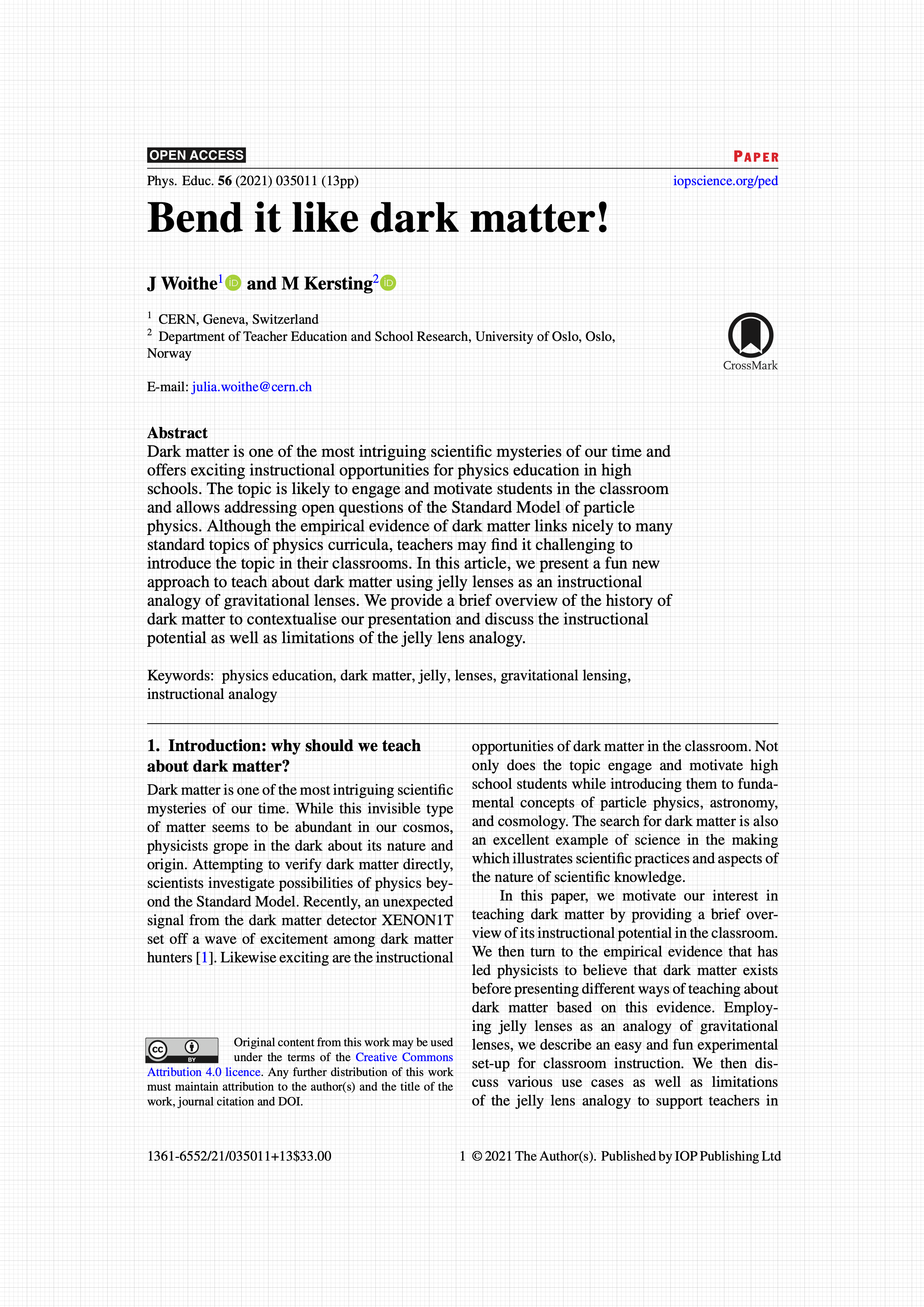Reading Material
To narrow the research-practice gap, CERN's PER team frequently publishes dedicated articles for teachers and educators. These short papers are intended to make our latest research results accessible to practitioners and provide them with research-based suggestions for the classroom. Below, you can find our latest publications for teachers and educators.
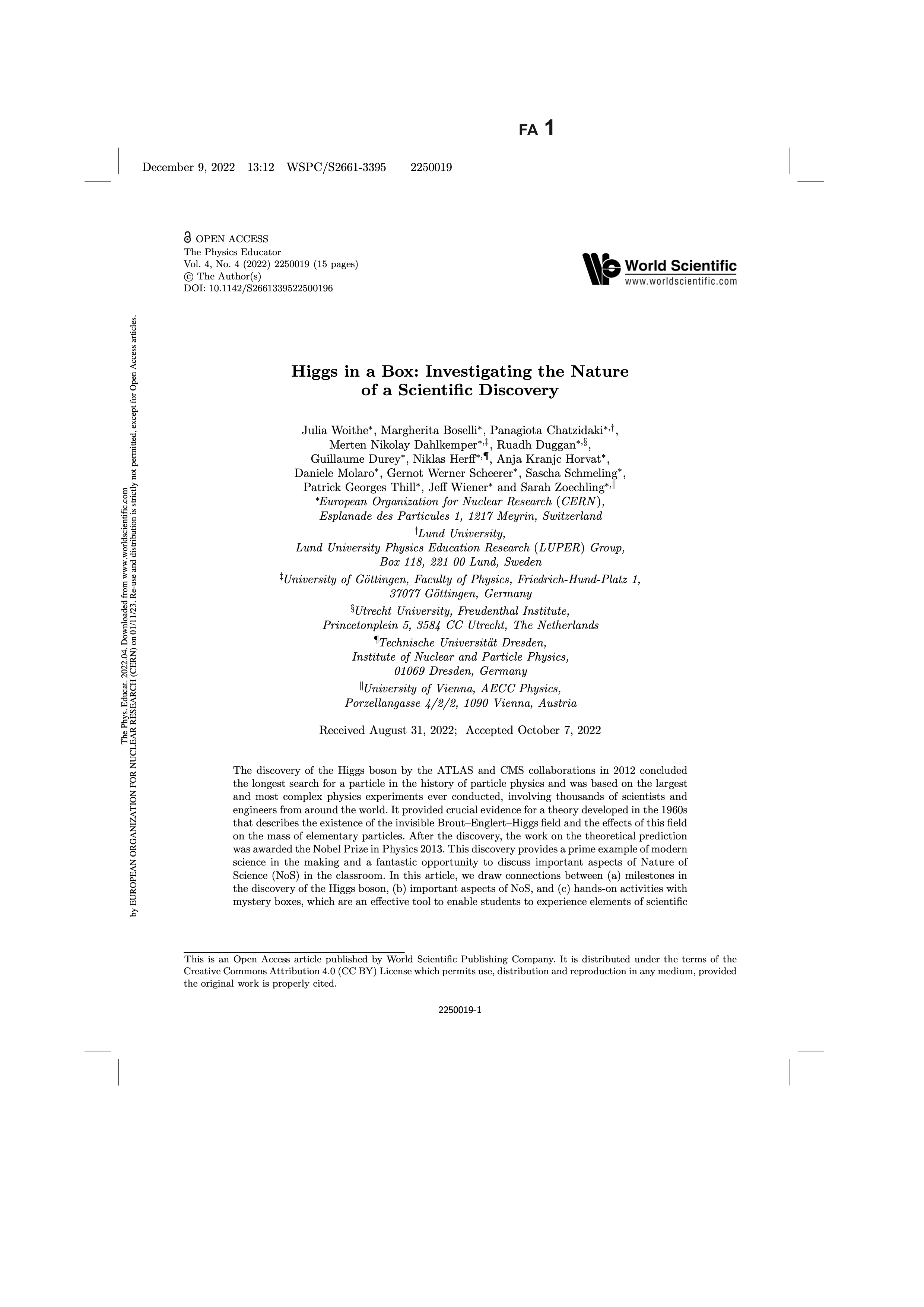 Higgs in a Box: Investigating the Nature of a Scientific Discovery
Higgs in a Box: Investigating the Nature of a Scientific Discovery
Abstract: The discovery of the Higgs boson by the ATLAS and CMS collaborations in 2012 concluded the longest search for a particle in the history of particle physics and was based on the largest and most complex physics experiments ever conducted, involving thousands of scientists and engineers from around the world. This discovery provides a prime example of modern science in the making and a fantastic opportunity to discuss important aspects of Nature of Science (NoS) in the classroom. In this article, we draw connections between (a) milestones in the discovery of the Higgs boson, (b) important aspects of NoS, and (c) hands-on activities with mystery boxes, which are an effective tool to enable students to experience elements of scientific discovery and explicitly reflect on NoS.
DOI: 10.1142/S2661339522500196 (open access)
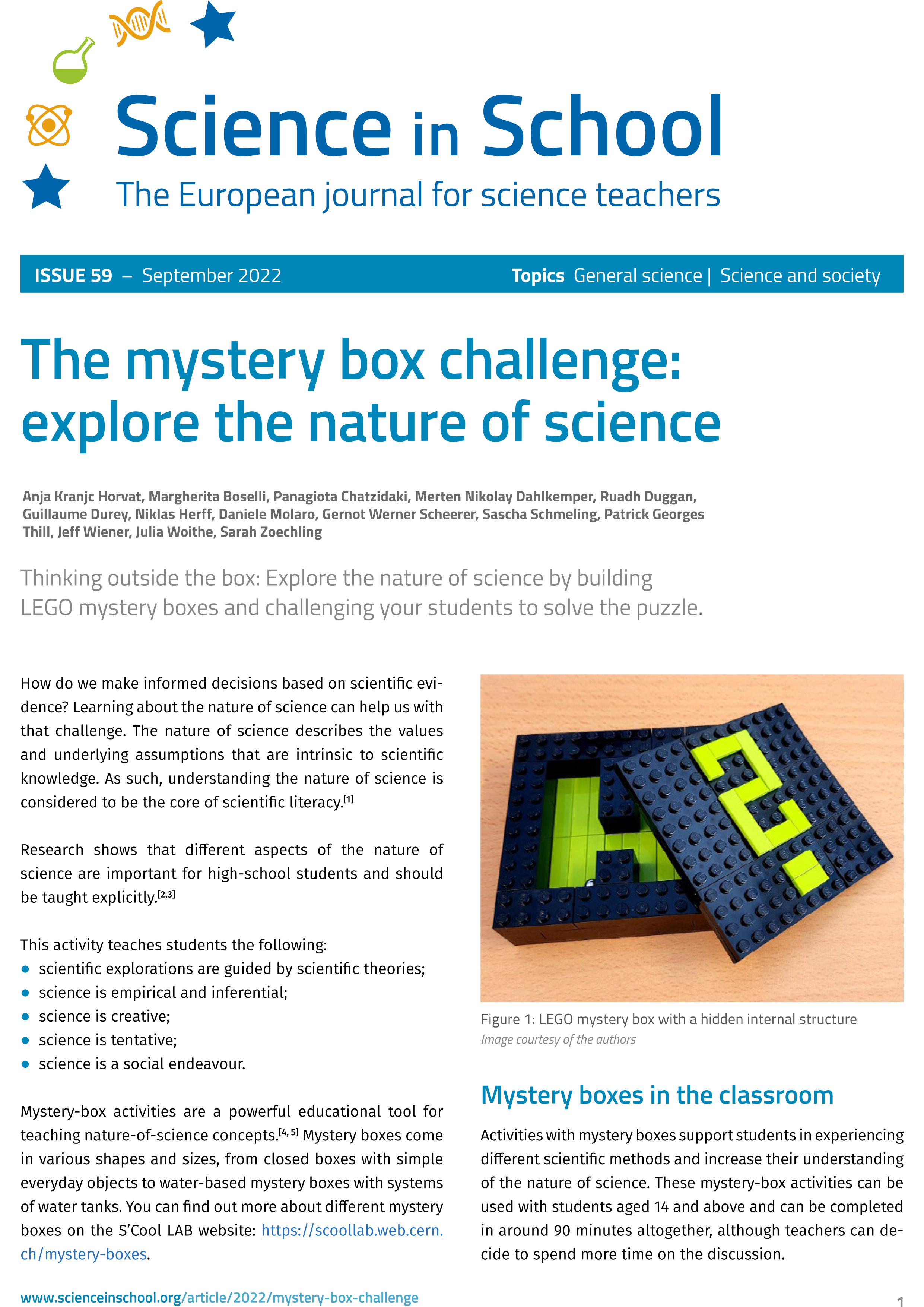 The mystery box challenge: explore the nature of science
The mystery box challenge: explore the nature of science
Abstract: How do we make informed decisions based on scientific evidence? Learning about the nature of science can help us with that challenge. The nature of science describes the values and underlying assumptions that are intrinsic to scientific knowledge. As such, understanding the nature of science is considered to be the core of scientific literacy. Mystery-box activities are a powerful educational tool for teaching nature-of-science concepts. Mystery boxes come in various shapes and sizes, from closed boxes with simple everyday objects to water-based mystery boxes with systems of water tanks. Explore the nature of science by building LEGO mystery boxes and challenging your students to solve the puzzle.
Link: scienceinschool.org/article/2022/mystery-box-challenge (open access)
Abstract: Dark matter is one of the most intriguing scientific mysteries of our time and offers exciting instructional opportunities for physics education in high schools. The topic is likely to engage and motivate students in the classroom and allows addressing open questions of the Standard Model of particle physics. Although the empirical evidence of dark matter links nicely to many standard topics of physics curricula, teachers may find it challenging to introduce the topic in their classrooms. In this article, we present a fun new approach to teach about dark matter using jelly lenses as an instructional analogy of gravitational lenses. We provide a brief overview of the history of dark matter to contextualise our presentation and discuss the instructional potential as well as limitations of the jelly lens analogy.
DOI: 10.1088/1361-6552/abe09c (open access)
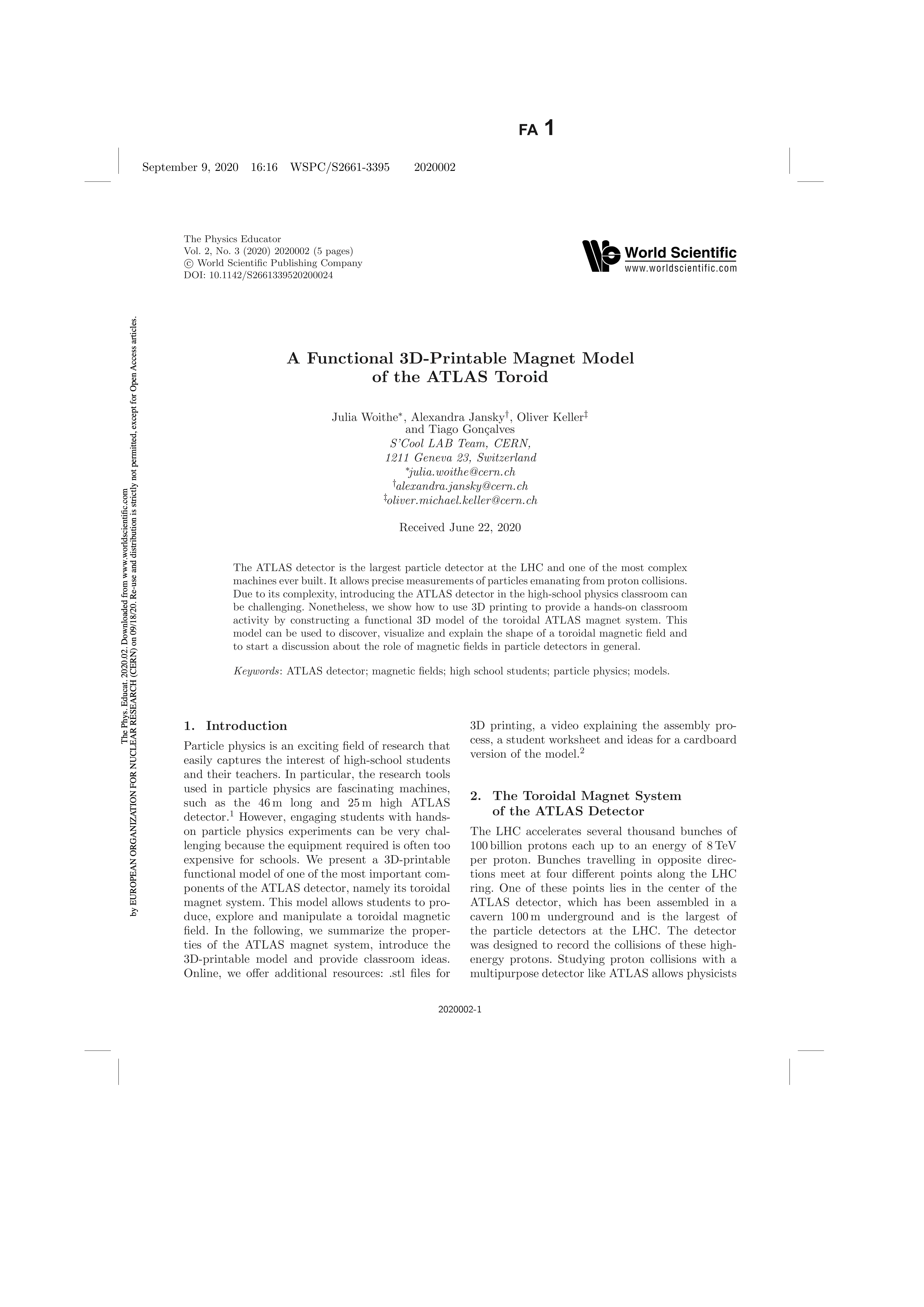 A functional 3D-printable magnet model of the ATLAS toroid
A functional 3D-printable magnet model of the ATLAS toroid
Abstract: The ATLAS detector is the largest particle detector at the LHC and one of the most complex machines ever built. It allows precise measurements of particles emanating from proton collisions. Due to its complexity, introducing the ATLAS detector in the high-school physics classroom can be challenging. Nonetheless, we show how to use 3D printing to provide a hands-on classroom activity by constructing a functional 3D model of the toroidal ATLAS magnet system. This model can be used to discover, visualize and explain the shape of a toroidal magnetic field and to start a discussion about the role of magnetic fields in particle detectors in general.
DOI: 10.1142/S2661339520200024 (open access)
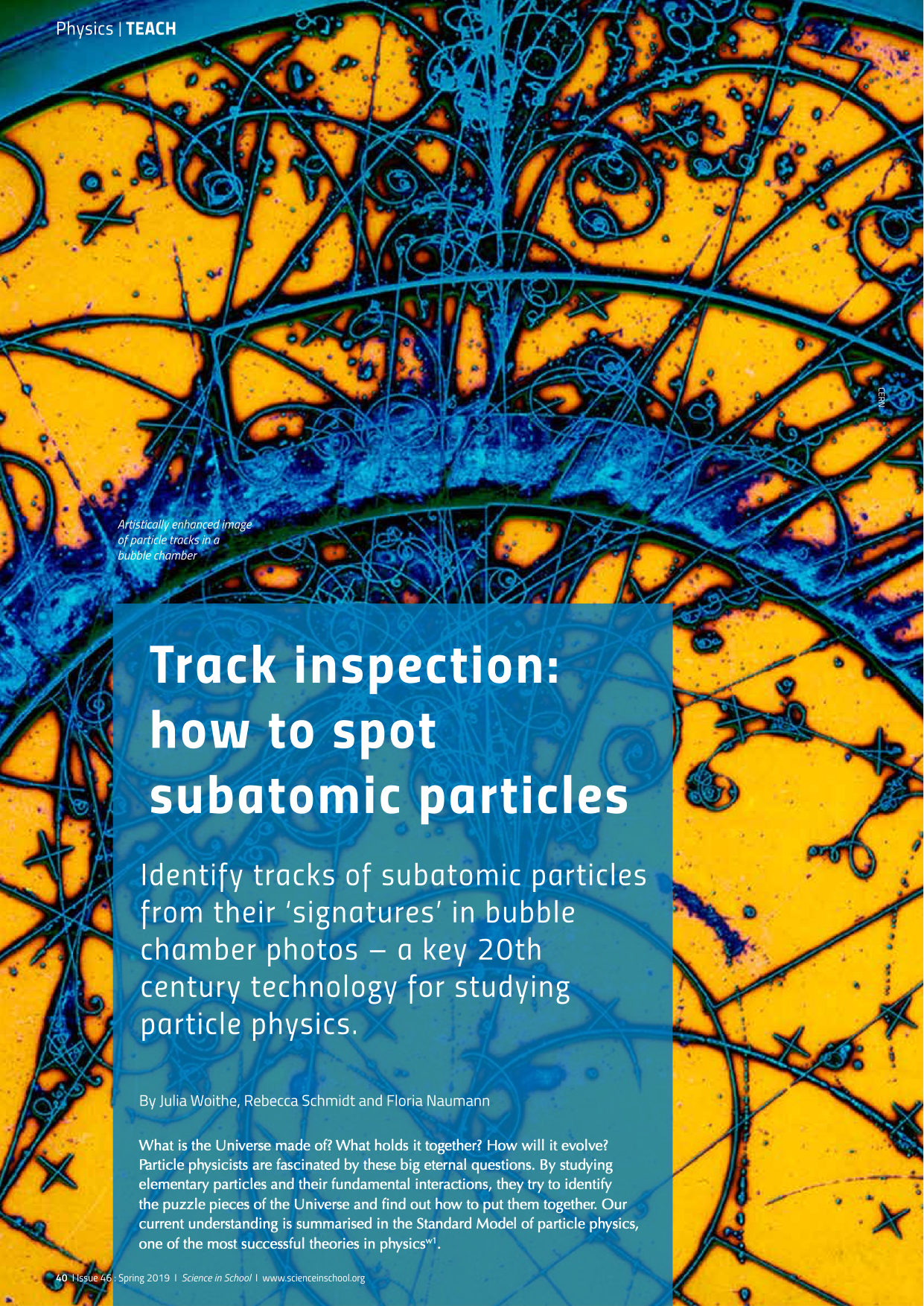 Track inspection: how to spot subatomic particles
Track inspection: how to spot subatomic particles
Abstract: Although bubble chambers are no longer the technology of choice for particle physicists, they can still enrich the discussion about particle physics in the classroom. We have developed several activities for advanced high-school students, in which they study bubble chamber photographs and analyse tracks of high-energy particles. For example, students interpret the curvature of particle tracks in magnetic fields and learn how to identify different types of particles.
Link: scienceinschool.org/content/track-inspection-how-spot-subatomic-particles (open access)
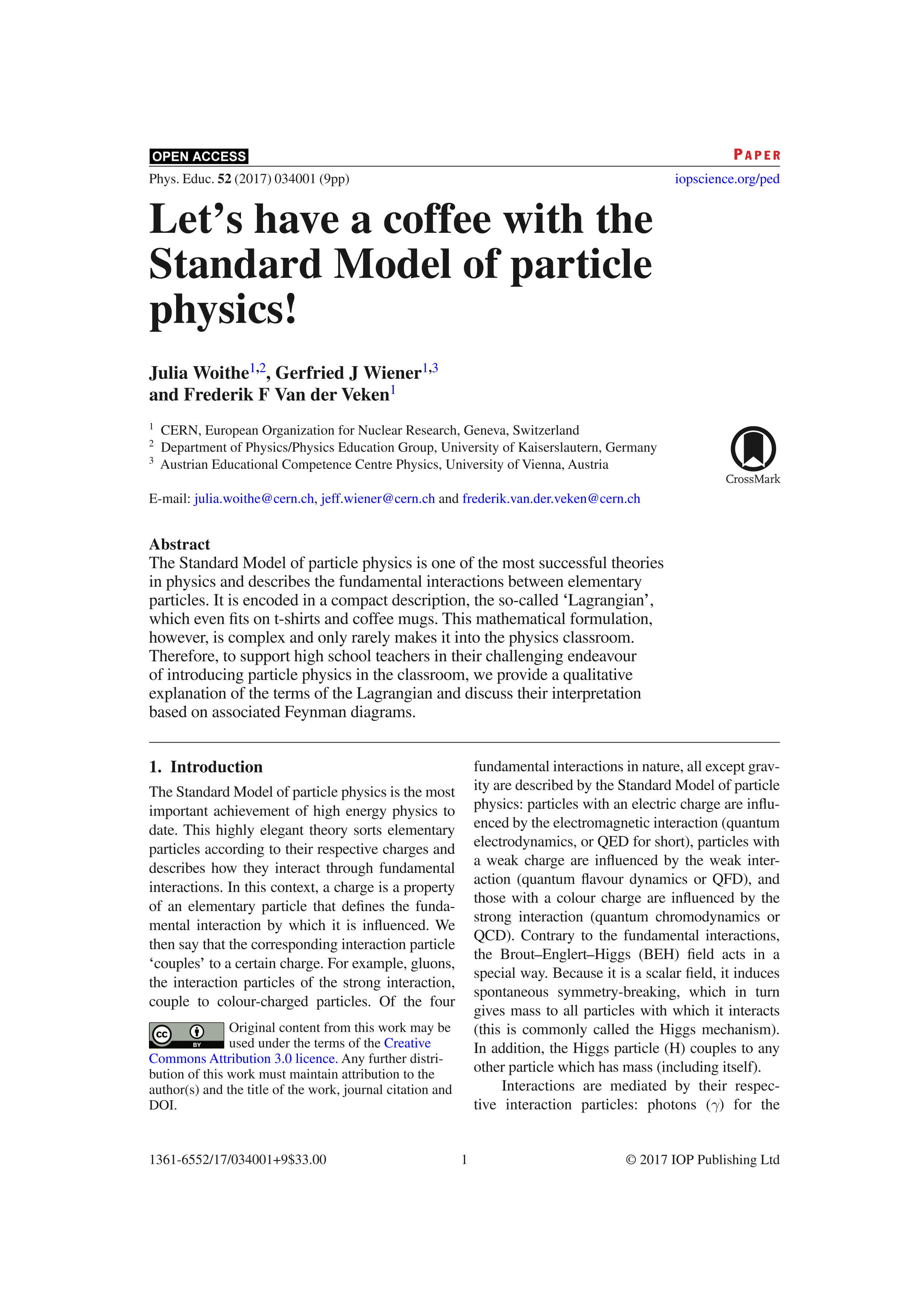 Let’s have a coffee with the Standard Model of particle physics!
Let’s have a coffee with the Standard Model of particle physics!
Abstract: The Standard Model of particle physics is one of the most successful theories in physics and describes the fundamental interactions between elementary particles. It is encoded in a compact description, the so-called 'Lagrangian', which even fits on t-shirts and coffee mugs. This mathematical formulation, however, is complex and only rarely makes it into the physics classroom. Therefore, to support high school teachers in their challenging endeavour of introducing particle physics in the classroom, we provide a qualitative explanation of the terms of the Lagrangian and discuss their interpretation based on associated Feynman diagrams.
DOI: 10.1088/1361-6552/aa5b25 (open access)
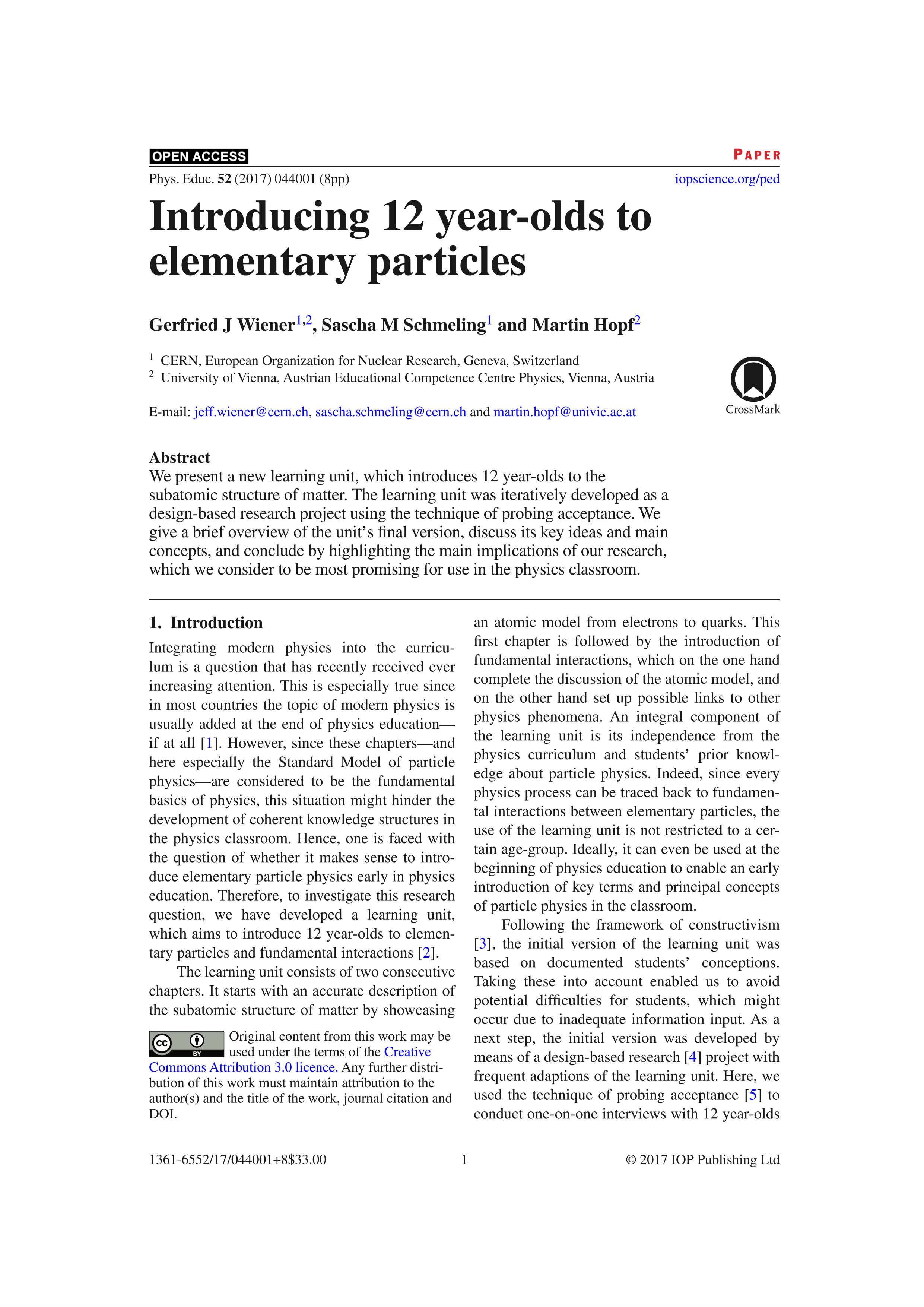 Introducing 12 year-olds to elementary particles
Introducing 12 year-olds to elementary particles
Abstract: We present a new learning unit, which introduces 12-year-olds to the subatomic structure of matter. The learning unit was iteratively developed as a design-based research project using the technique of probing acceptance. We give a brief overview of the unit's final version, discuss its key ideas and main concepts, and conclude by highlighting the main implications of our research, which we consider to be most promising for use in the physics classroom.
DOI: 10.1088/1361-6552/aa6cfe (open access)
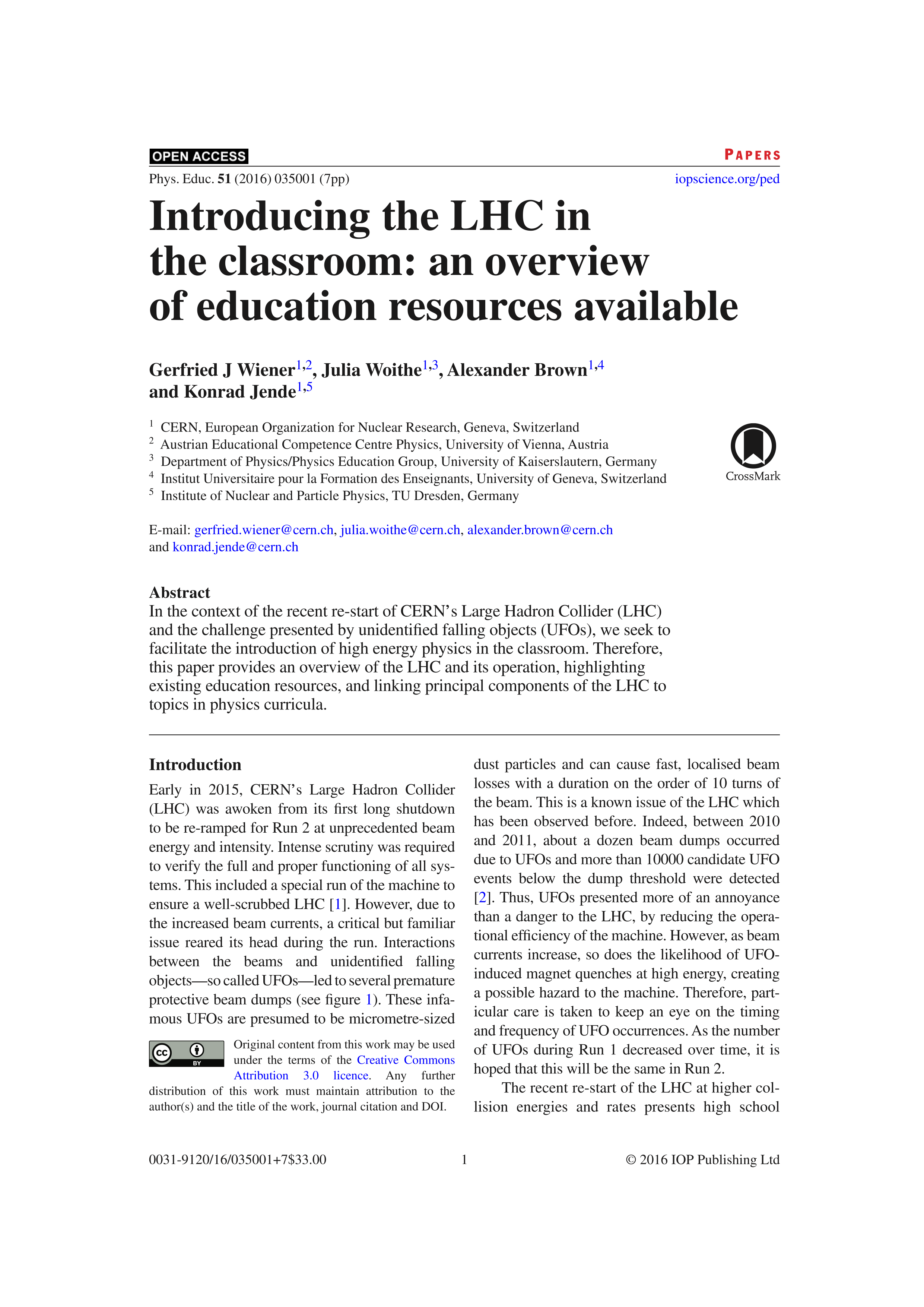 Introducing the LHC in the classroom: an overview of education resources available
Introducing the LHC in the classroom: an overview of education resources available
Abstract: In the context of the recent re-start of CERN's Large Hadron Collider (LHC) and the challenge presented by unidentified falling objects (UFOs), we seek to facilitate the introduction of high energy physics in the classroom. Therefore, this paper provides an overview of the LHC and its operation, highlighting existing education resources, and linking principal components of the LHC to topics in physics curricula.
DOI: 10.1088/0031-9120/51/3/035001 (open access)

